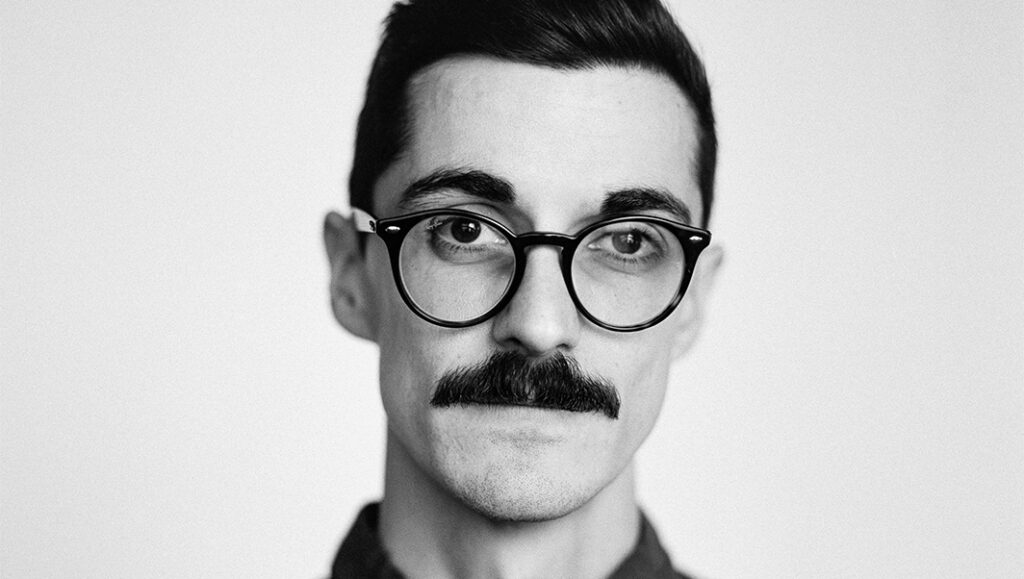Fantastic Fest 2023: Filmmaker Francis Galluppi Discusses The Last Stop in Yuma County, His Creative Process, and More

Francis Galluppi has quickly become the talk of Fantastic Fest 2023 for his full-length directorial debut, The Last Stop in Yuma County, which he also wrote, produced, and edited. Receiving acclaim from both critics and audiences, The Last Stop in Yuma County became an instant favorite at the festival.
Starring Jim Cummings, Jocelin Donahue, Richard Brake, Nicholas Logan, Faizon Love, Michel Abbott Jr., and Alex Essoe, The Last Stop in Yuma County follows a traveling knife salesman forced to wait for fuel at an isolated rest stop. When two bank robbers arrive during their getaway from a big heist, our knife salesman makes a fateful decision that will change his life forever.
Pop Culturalist was lucky enough to speak with Francis about The Last Stop in Yuma County, how the Four Aces Movie Ranch inspired the script, building his dream cast, his creative process, and more.
PC: You were inspired to write this film after scouting the iconic Four Aces Movie Ranch. Each of these locations within the film feels like a character in itself, which is often how your scriptwriting begins. What were the key components that you were looking for when you were scouting these locations? What was it about Four Aces that spoke to you?
Francis: I’m a sucker for anything old. You did your research, so I don’t have to repeat everything. Everything that I’ve done always has a period aspect to it. I fell in love with the space. I thought there was enough there to craft a script. From the motel to the diner to the gas station, I fell in love with the desolate environment of it all. I walked in and I was like, “Cool. I can spend twenty days in this room.”
My DP hates me because I always have to have old cars in everything that we do. They’re always breaking down. We’ve been doing this since our short films where the cars would stop running, and we’d have to push them. [laughs] We had to do the same thing on Last Stop. I was like, “We’re back to square one, baby.” [laughs] There’s a lot of stuff where Jim’s driving and we’re pushing the car. We’re ducking around and pushing from the back. Those cars never work.
PC: There are so many fantastic movies and television shows that have been filmed here, but you do such a fantastic job making these locations feel familiar, but also new. How were you able to strike that balance so seamlessly?
Francis: My DP and I watched pretty much everything we could that was shot at Four Aces. As we were doing that, we would talk about what we liked and what we didn’t. We also talked about finding that balance and I had really long discussions with my production designer, Charlie Textor. Luckily, we had two weeks of prep where we could do scenic work and dress it. It was about giving it these small touches where it felt like Charlotte’s home and felt lived in because when you walk in, it feels like a set. It was about finding those little touches that made it feel homey and real, even though some of those things weren’t prominent on the screen. They’re there and you almost feel it more.
PC: You wrote this feature with these particular actors in mind and you were lucky enough to get them all on board. What was the secret behind getting everyone to sign on? Was there a plan B if an actor wasn’t available?
Francis: [laughs] It was the letters. I wrote them all letters. I think that actually worked. From there, I knew that if I could get them to jump on a Zoom with me I could convince them.
It’s funny. The cast are all movie lovers and big cinephiles. I remember talking to Alex Essoe. She was in Ireland filming The Pope’s Exorcist. We talked for over two hours and then she texted me after and was like, “Oh my God. I realize we didn’t even talk about the movie.” I was like, “It’s okay. I’m already a huge fan.” She didn’t have to convince me. We mainly talked about movies, cinema, and filmmakers that we love and were influenced by. It was the letters, Zooms, and having those one-on-ones.
In terms of plan B, I’m not sure. I never got to that point. [laughs] I never really panicked. There was a point in the process of making this movie where we were with a different company. We were going out for these bigger names and weren’t having luck there, but that was never the movie that I wanted to make. I was getting forced to go after these names with “value” in the foreign markets. I was like, “F*ck.” It was heartbreaking because I always wanted Jim. I always knew that Jim was the person to pull this character off. Once we were able to secure financing and do it independently, that’s when I was able to approach all the actors that I saw fit for this film.
PC: Jim’s fantastic. Before heading into this film, like you were saying, you had one-on-ones with each of your actors. How did that collaboration and process allow you to build trust with your cast and enable them to take agency over their characters?
Francis: Once we were able to finish casting, I gave them a lot of freedom. We would jump on Zooms and do one-on-ones where we would comb through the script. We did a bunch of rehearsals. Anything that felt contrived or forced, I would rewrite on the spot. We built trust that way, so there was never a moment on set where they would say, “I don’t think my character would say that or I don’t think I would sit here like that.” That was stuff that we all previously talked about so there was a real clear understanding of who these characters were and what their motivations were. Because we talked about it so much, not just the dialog, there were these micro-expressions that they were each able to bring to the film.
PC: Something else that you’ve done so brilliantly with this film is that you’re able to play with these different tones so effortlessly. Why do you think the dark comedy genre plays well with the themes that you wanted to tackle in this film and with these larger-than-life characters?
Francis: The dark comedy aspect was always there on the page. It was really when we brought in Nicholas Logan who plays Travis and Connor Paolo who plays Gavin, where I was like, “Let’s swing for the fences here and do these larger-than-life, absurd characters.” It was about balancing these absurd characters with characters like Charlotte. Every time that I felt like we were going to big, I was like, “F*ck. Is this becoming too ridiculous?” That’s when we would flip and shoot Jocelin’s coverage. I was like, “Nevermind. We’re safe because we have characters like Charlotte who grounds the world.” I tried to constantly play with that balance between absurd, serious, and suspenseful.” There are a lot of moments where we go from, “This is really absurd and silly to this is really dark.” I tried to take that same approach with the characters. It’s a fifteen-cast ensemble in a single room. It was about finding which characters needed to ground things and which ones needed to breathe life into it.
PC: Time is such a luxury when you’re working on a film and you shot a lot of this project in a single take, which is an incredible feat. Is there a scene in particular that you can’t believe you were able to pull off?
Francis: Without giving any spoilers, it’s the finale. You know what I’m talking about. I remember shooting that on the day and thinking, “This is f*cking crazy.” But in terms of technical achievement, it’s a scene where Rich is sitting across from Jim and Jocelin. Variety posted it a few days ago. I’m really proud of that shot because my DP and I had talked about it for so long. We were both like this is going to be really tough to get through and I don’t know if we’re going to be able to pull it off. We were like, “If we can’t, we’ll have to get coverage.” We were getting close and we were like, “We’re going to be okay. We’re going to be able to get that shot and not get coverage.”
So it’d be that one and when Jim exits the diner. That was really nerve-wracking because we were outside and the streets were busy. There were cars coming in and out. We would be in the middle of a take and it would be going perfectly and then a modern car would zoom by. We’d be like, “No!” It was really rewarding when we finally got it. It was a celebratory moment on set.
PC: This is also your full-length directorial debut. What was the most surprising part of this process? What was the biggest takeaway that you’ll bring to your next project?
Francis: The biggest takeaway is to work with people you really trust and work with people who actually believe in the project that you’re making. They’re there for the right reasons and aren’t there for a paycheck. I brought a lot of people onto this project who worked on my short films and previously didn’t have any experience. Sometimes having a passion for it is more important than experience. It’s about staying true to that and casting people that you see fit, and not because they’re just a name. It’s because they can play this character better than anyone else.
The most surprising part was how much fun I had. I remember on my short films I would be on day three and be like, “How are we going to get through today? This is crazy.” Then you think about a feature and you’re like, “How do you maintain the momentum of a twenty-day shoot?” But it never felt that way. After day three, you break through this barrier, and you’re in go mode. I was really anticipating that I’d be completely burnt out and wondering how I was going to finish the movie. Sure, there were moments where things would come up and it would feel like we weren’t going to finish this movie because we only had a few days left, but I wasn’t expecting to have so much fun making it.
Make sure to follow Francis on Instagram.


Discussion about this post